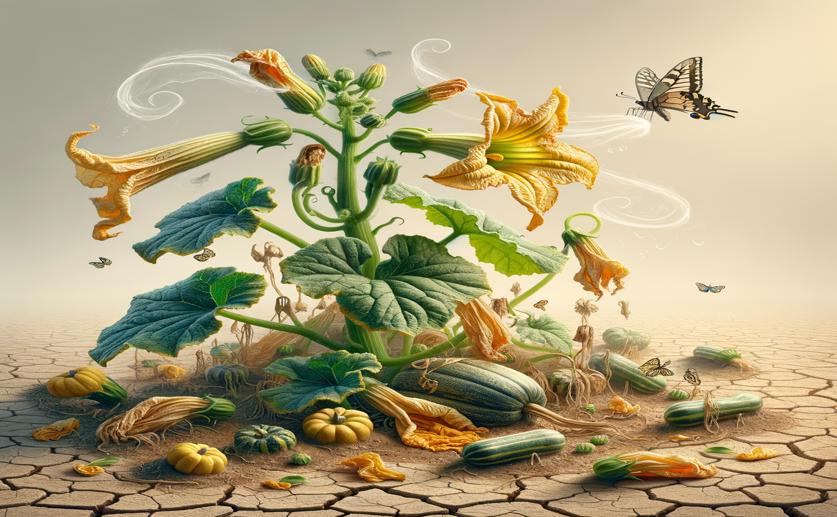
Drought Hurts Flower Growth and Pollination in Squash but Not Their Scent
Greg Howard
10th August, 2024

Image Source: Natural Science News, 2024
Key Findings
- The study from Paris Lodron University of Salzburg found that drought stress negatively impacts flower production, petal size, nectar availability, and bumblebee visitation in Styrian oil pumpkins
- Female flowers were more severely affected by drought, often aborting before opening, while male flowers also suffered but to a lesser extent
- Drought-stressed plants experienced reduced bumblebee visitation, which is crucial for effective pollination as it requires pollen transfer from male to female flowers
EnvironmentEcologyPlant Science
References
Main Study
1) Negative and sex-specific effects of drought on flower production, resources and pollinator visitation, but not on floral scent in monoecious Cucurbita pepo.
Published 8th August, 2024
https://doi.org/10.1111/nph.20016
Related Studies
2) Floral humidity and other indicators of energy rewards in pollination biology.
3) Floral humidity as a reliable sensory cue for profitability assessment by nectar-foraging hawkmoths.
4) A horizon scan of future threats and opportunities for pollinators and pollination.



 30th July, 2024 | Jenn Hoskins
30th July, 2024 | Jenn Hoskins